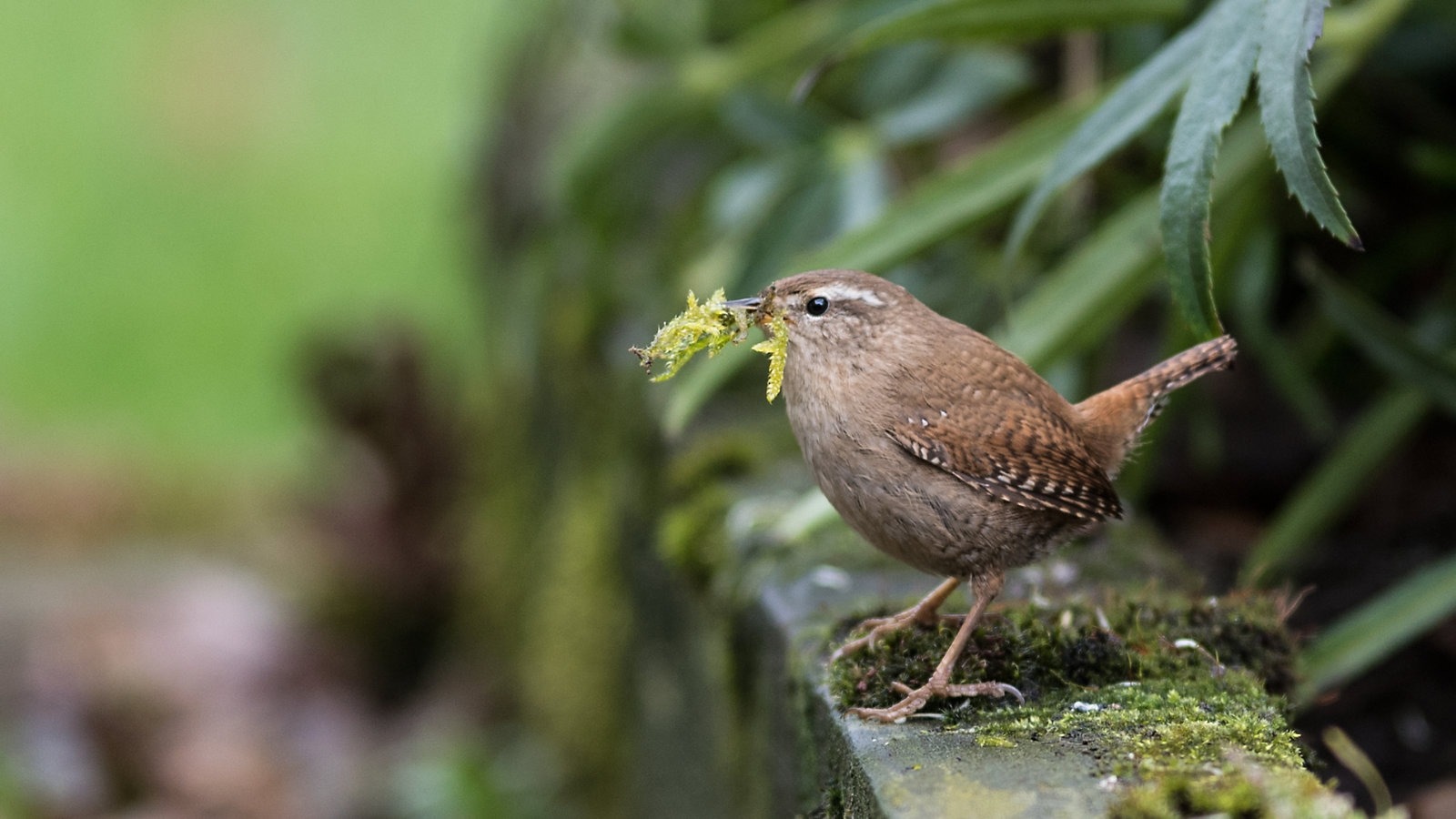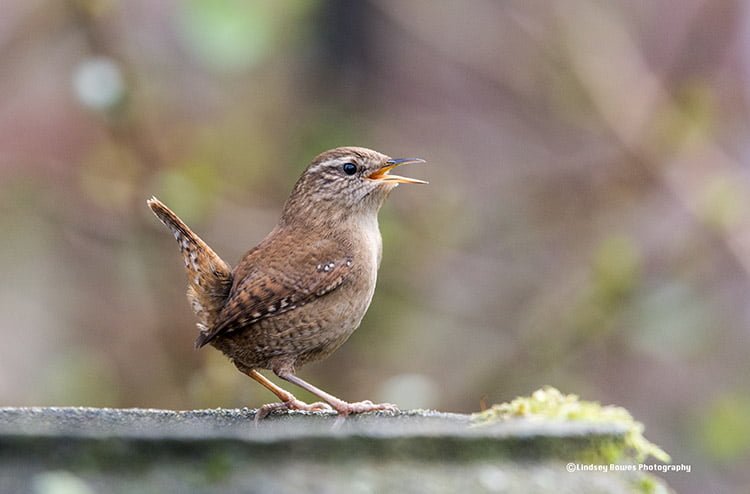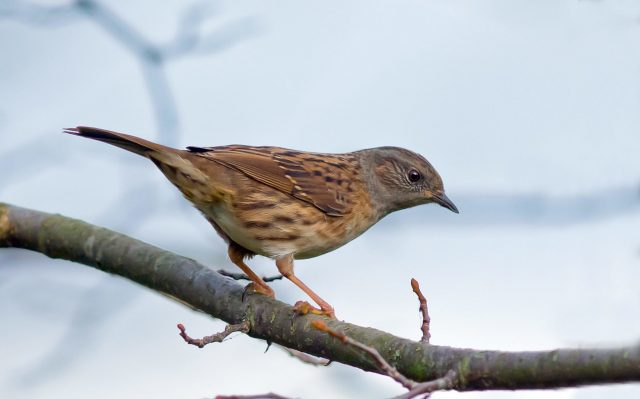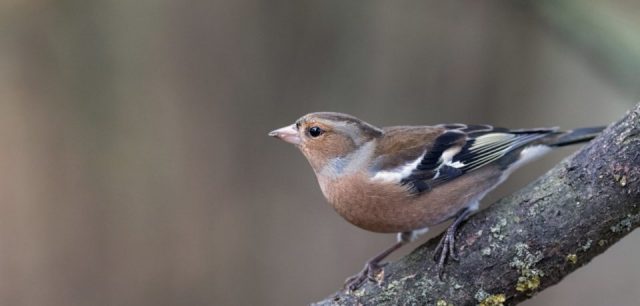Overview
The wren is an agile and restless bird – it is really a mouse in bird form as it is adapted to live in a similar way and in similar habitats. A wren’s short tail and wings allow it to scurry and hop about within hedgerows and amongst vegetation, while the very long needle-like bill is perfect for foraging in all manner of shady crevices for hidden invertebrates. The wren is resident in Britain all year and migratory in northern Europe. Wrens lay five to seven eggs (white with small brown specks) in their small domed nests in a well hidden dry spot. They will sometimes nest in small gaps in buildings such as barns, sheds or garages, especially if they come with a good supply of small spiders to satisfy the many tiny hungry chicks!

Description
This charming little bird, often thought of as the smallest bird in Britain is actually our third smallest breeding species, marginally larger than the goldcrest and firecrest. The wren’s tiny size is emphasised by the short neck, short wings and very short stubby tail which is often held in a characteristic upright position… giving the bird the general appearance of a tiny fuzzball of feathers, especially when it ruffles its feathers to keep warm in chilly weather!
The colour is a reddish-brown above with darker brown barred markings (‘vermiculations’) on wings, tail and lower back. It has pale brown or buff-white underparts with fine brown markings. It also has a clear pale buff-white ‘eyebrow’ mark above the eye: this type of marking in birds is known as a ‘supercilium’ (a mark or line passing through the eye is called an ‘eye-stripe’). Its sharp pointed dark bill is proportionally very long for the size of the bird. There is no difference in size or appearance between male and female wrens, and if seen clearly there are no other birds it can really be confused with.
Call & Song: Apart from the tiny physical size of this bird, the song is possibly the wren’s greatest claim to fame: it is a song even non-birdwatchers are likely to be familiar with as it is so distinctive! The wren produces an amazingly loud and clear song for such a small package – to watch a wren in full song one can only marvel and wonder where all the sound and energy comes from! The full song is a very rapid series of loud clear notes ending in an even faster ‘trill’. The main call or alarm is a scolding trill or ‘tic-tic-tic’, which could be confused with the alarm call of a robin.
Latin name: Troglodytes troglodytes
Size: 9 – 10 ½ cm (8 – 9 grams)
In The Garden
The wren is a very common resident which can be found all year in almost all habitats throughout Britain, including gardens large and small. The best way to assist wrens and attract them into your garden is to leave ‘untidy’ areas, which will give their invertebrate prey places to hide and so somewhere for the little wren to forage. You could create a wren-friendly habitat by making a pile of logs or rocks in a corner of the garden, and they will love a nice untidy compost heap!

Did You Know?
The scientific name for the wren – ‘troglodytes’ – comes from the Greek meaning ‘cave-dweller’ or ‘one who creeps into holes’!
Over 100 individual notes are packed into the wren’s remarkable rapid-fire song, which only lasts for a few seconds.
There are several ‘sub-species’ of wren which have adapted to live amongst rocks on cliffs of Scottish islands, such as the ‘St Kilda wren’. Their main adaptation is a larger body size to help withstand the harsh conditions and Scottish weather!


